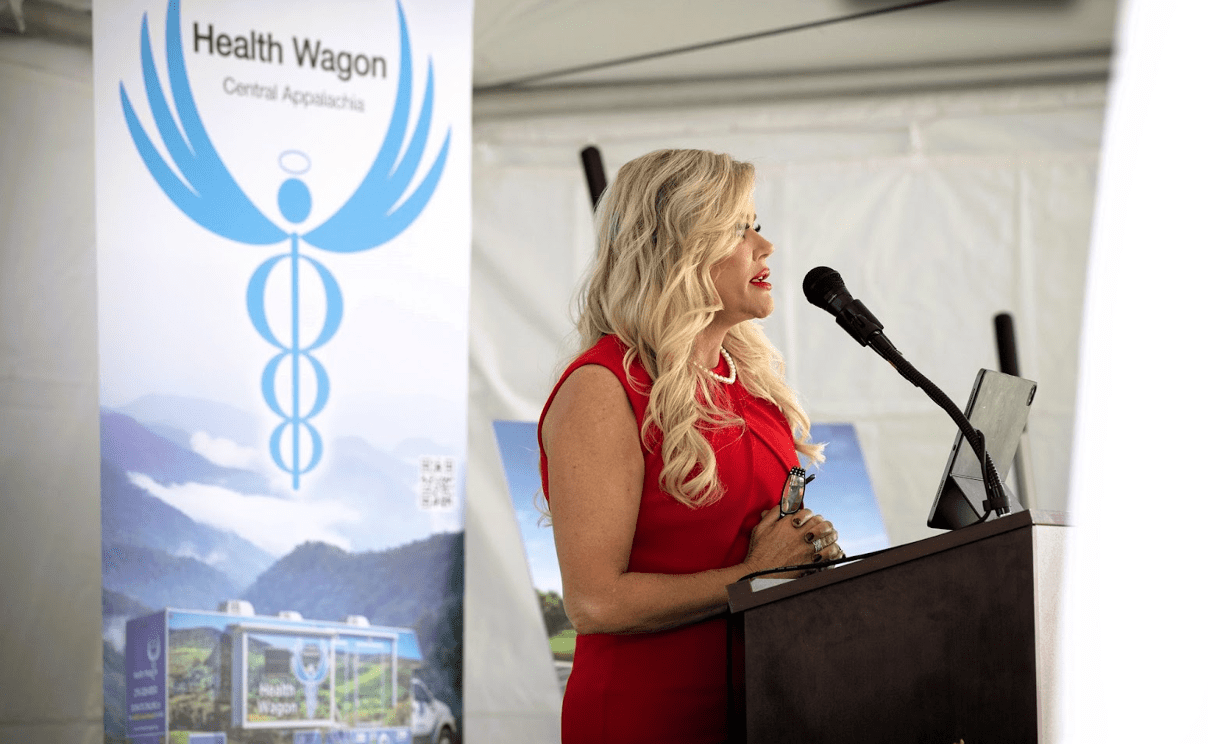Health
How Telehealth Works for Addicts in Recovery

Technology has been shaping healthcare for decades, and these days, tech advancements for the health sector are happening faster than ever before. Telehealth has emerged as one advancement that has touched every healthcare discipline, from cancer care to pediatrics. The innovative approach of telehealth is breaking down barriers to care and even reaching those who are struggling with substance abuse.
By leveraging digital platforms, recovery specialists can offer better access to therapy sessions, support groups, and medical consultations. These breakthroughs in accessibility are significant for people in healthcare deserts who are languishing under increased addiction rates and a lack of reliable treatment options.
Nick Padlo, founder and CEO of Sophros Recovery in Florida, has seen the benefit of telehealth for recovering addicts firsthand. “Individuals struggling with addiction can now find support and guidance if they do not have access to a treatment center near their home,” he explains. “These virtual programs are designed to provide comprehensive care, similar to traditional in-person treatment, but with the added convenience of digital accessibility.”
Here, we explore the benefits of telehealth for recovery and how clinicians and other professionals in the field can best utilize it for better outcomes.
An increased need for comprehensive recovery
The United States saw over 107,000 overdose deaths in 2023. This was a notable increase from previous numbers. The emergence of fentanyl as the drug of choice for many and the perpetuation of alcohol and other drug abuses have made access to comprehensive recovery even more important than ever.
“Understanding the options available can be the first step to recovery,” says Padlo. When people have easier access to help, they may be more apt to seek sobriety.
The pandemic saw a marked increase in substance abuse, laying bare the need for digital access to recovery resources. During the COVID shutdown, the crucial need for an alternative to in-person treatment was evident, and the benefits of such treatment options allowed clinicians and other professionals to carry this digital access to recovery care through the pandemic and into the post-COVID world.
In addition, those living in rural areas or areas with a lack of access to comprehensive recovery care often have needs on par with those in larger urban areas. Telehealth allows people to access the same professionals that those in big cities rely upon.
Studies have shown that continuity of care is critical to the success of addiction recovery. Telehealth can facilitate ongoing engagement with those in recovery, securing continuity of care and leading to better recovery outcomes.
A modern approach
“Online addiction recovery typically involves a combination of individual therapy, group therapy, educational sessions, and support groups, all conducted via video conferencing or other online tools,” explains Padlo. The flexibility of these programs allows participants to schedule them around their availability and considering their other commitments.
“We aim to mirror the effectiveness of traditional methods,” says Padlo. “We are providing the same level of care and support through a virtual format.”
Padlo stresses that online recovery can also reduce stigmas that are associated with seeking help for one’s addictions. When those in recovery can participate from the comfort of their own home, they may be more apt to commit to the recovery process.
People will need to consider their personal circumstances when determining if telehealth for addiction recovery is right for them. They may want to evaluate how comfortable they are with technology and whether they have a stable internet connection. Also, it helps to have a strong support system to keep one accountable since it can sometimes be easier to ignore digital meeting commitments.
However, Padlo cautions that those with severe addiction issues or co-occurring addictions may fare better with in-person detox and recovery.
Telehealth can be a powerful tool in the fight against addiction. The option offers a range of benefits, including easier access, privacy, and even savings for some. According to a recent study by the Oregon Health and Science University, telehealth may be just the solution to overcoming the stigma of rehab and recovery and radically reducing barriers for people who need it the most.
While telehealth for addiction recovery may not be a one-size-fits-all solution, and some people may require more intensive care and medical intervention, it has broken barriers for those in areas of limited access to recovery or seeking an option that offers more privacy.
As the field of virtual health delivery continues to evolve, the benefits of telehealth for addiction recovery will become clear. Telehealth provides comprehensive, discrete, and effective care for those starting or continuing their recovery journey.
Health
Dr. Teresa Tyson, DNP, Discusses The Hidden Healthcare Crisis in Remote Regions

Image source: Dr. Teresa Tyson, DNP, and Health Wagon
Access to healthcare remains a challenge for many individuals living in rural and remote areas, where medical facilities are scarce or difficult to reach. Many residents endure long travel times for even basic medical services, leading to delayed diagnoses and worsening health conditions. The lack of healthcare professionals further compounds the issue, leaving communities with inconsistent or inadequate care.
While technology and government initiatives have made strides in addressing these disparities, Dr. Teresa Tyson, DNP, notes how there are many obstacles still hindering widespread improvement. Bridging the healthcare gap requires a combination of innovative solutions, infrastructure development, and policy changes to ensure that medical services reach those who need them most.
Limited Access to Medical Care
Many remote regions struggle with a severe lack of healthcare facilities, leaving residents with minimal options for medical treatment. Hospitals and clinics are often located hours away, making even routine checkups a logistical challenge.
A shortage of medical professionals further worsens the situation, as many doctors and nurses prefer to work in urban areas with better resources and career opportunities. As a result, rural communities often rely on understaffed clinics or visiting healthcare workers who may not be available consistently. This leads to delayed diagnoses and inadequate treatment for chronic conditions. Many rural clinics operate with limited medical supplies, making it difficult to provide comprehensive care even when healthcare professionals are available.
In some cases, patients must travel long distances just to receive basic care, often at great personal and financial costs. The burden of transportation, time off work, and the uncertainty of available treatment discourage many from seeking medical attention until their conditions become severe.
Health Risks and Consequences
Delays in medical care often mean that conditions that could have been treated early turn into serious health complications. Many individuals in remote areas develop chronic illnesses that go undiagnosed for years simply because healthcare services are too far away or difficult to access. Diseases that are manageable with regular monitoring, such as diabetes or hypertension, frequently spiral out of control due to the lack of consistent medical supervision.
Beyond physical health, the absence of adequate healthcare also takes a toll on mental well-being. Isolation and limited access to mental health professionals leave many struggling with anxiety, depression, and other psychological conditions without proper support. In small, tight-knit communities, stigma around mental health can make it even harder for individuals to seek help, further exacerbating the crisis.
Preventable diseases continue to spread in these areas due to the lack of vaccinations, screenings, and early interventions. Without proper healthcare infrastructure, outbreaks of common illnesses can have devastating effects, particularly on children and the elderly. The combination of poor access, financial barriers, and limited awareness creates a cycle where minor health concerns escalate into life-threatening conditions.
Challenges in Expanding Healthcare Services
Building and maintaining healthcare infrastructure in remote regions comes with considerable hurdles. Poor road conditions and unreliable transportation make it difficult for medical professionals to reach patients, and in some cases, ambulances are unavailable, forcing residents to rely on personal vehicles or community efforts to transport those in need. In areas with extreme weather conditions, seasonal challenges further complicate healthcare delivery, cutting off entire communities during certain times of the year. These conditions make it nearly impossible for emergency medical teams to provide timely assistance in critical situations.
Funding remains a major obstacle, as rural healthcare facilities often struggle with limited financial resources. Many small clinics operate on tight budgets, lacking essential medical equipment and supplies. Without sufficient investments, these facilities cannot expand their services, making it harder to attract and retain qualified healthcare workers. As a result, many professionals opt to work in urban settings where they have access to better salaries, career advancement, and modern medical technology.
Role of Technology in Bridging the Gap
Advancements in technology are offering new ways to connect patients in remote areas with medical professionals. Telemedicine has made it possible for individuals to consult doctors without having to travel long distances, reducing delays in diagnoses and treatment. Virtual consultations, remote monitoring, and mobile health apps allow patients to receive medical advice without needing to visit overcrowded or distant healthcare facilities. In addition to telemedicine, artificial intelligence is being used to assist in diagnosing conditions remotely, helping bridge the gap in specialist care.
Despite its potential, implementing technology-driven healthcare solutions in rural regions is not without obstacles. Many areas lack reliable internet access or the necessary digital literacy to make full use of telehealth services. Even when technology is available, the cost of devices and connectivity can create another barrier, preventing low-income households from benefiting fully. Addressing these issues requires a combination of infrastructure development, education, and financial support to ensure that technology can be effectively integrated into rural healthcare systems.
Efforts to Improve Rural Healthcare
Governments and nonprofit organizations are actively working to address the healthcare challenges faced by remote communities. Investment in medical outreach programs, mobile clinics, and training initiatives for local healthcare workers has helped bring essential services to those who need them most. Some regions have introduced incentive programs to encourage doctors and nurses to work in underserved areas, offering student loan forgiveness, housing assistance, or higher salaries.
Community-led initiatives also play a crucial role in improving healthcare access. Local volunteers and advocacy groups often step in to provide educational workshops, vaccination drives, and wellness programs tailored to the specific needs of their communities. These grassroots efforts help bridge gaps where formal healthcare systems fall short, ensuring that residents receive at least some level of medical support.
Future Prospects for Remote Healthcare
Innovations in medical technology, policy changes, and raising awareness are shaping the future of rural healthcare. The expansion of telehealth services, combined with improved infrastructure, has the potential to make healthcare more accessible and efficient. Continued investment in mobile medical units and community-based programs could ensure that even the most isolated areas receive the care they need. Research into low-cost, portable medical devices is also opening new doors for remote diagnostics and treatment.
Sustained progress will depend on collaboration between governments, healthcare providers, and local communities. Long-term solutions require more than temporary programs; they demand systemic changes that prioritize equitable medical access. If these efforts continue to grow, rural healthcare systems may finally move toward lasting improvements that benefit future generations.
-

 Tech4 years ago
Tech4 years agoEffuel Reviews (2021) – Effuel ECO OBD2 Saves Fuel, and Reduce Gas Cost? Effuel Customer Reviews
-

 Tech6 years ago
Tech6 years agoBosch Power Tools India Launches ‘Cordless Matlab Bosch’ Campaign to Demonstrate the Power of Cordless
-

 Lifestyle6 years ago
Lifestyle6 years agoCatholic Cases App brings Church’s Moral Teachings to Androids and iPhones
-

 Lifestyle4 years ago
Lifestyle4 years agoEast Side Hype x Billionaire Boys Club. Hottest New Streetwear Releases in Utah.
-

 Tech6 years ago
Tech6 years agoCloud Buyers & Investors to Profit in the Future
-

 Lifestyle5 years ago
Lifestyle5 years agoThe Midas of Cosmetic Dermatology: Dr. Simon Ourian
-

 Health6 years ago
Health6 years agoCBDistillery Review: Is it a scam?
-

 Entertainment6 years ago
Entertainment6 years agoAvengers Endgame now Available on 123Movies for Download & Streaming for Free
